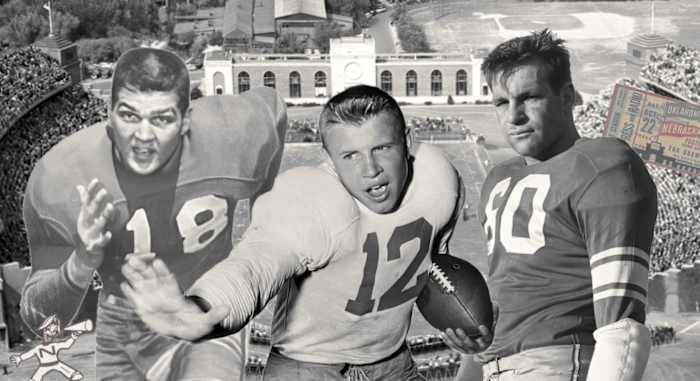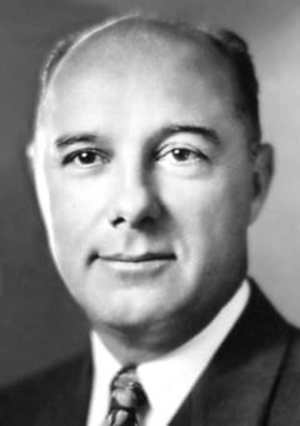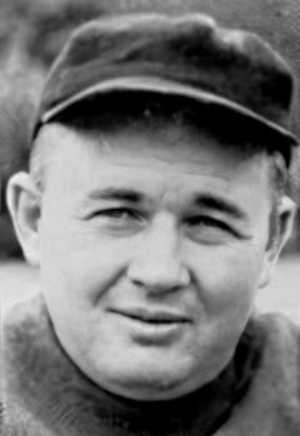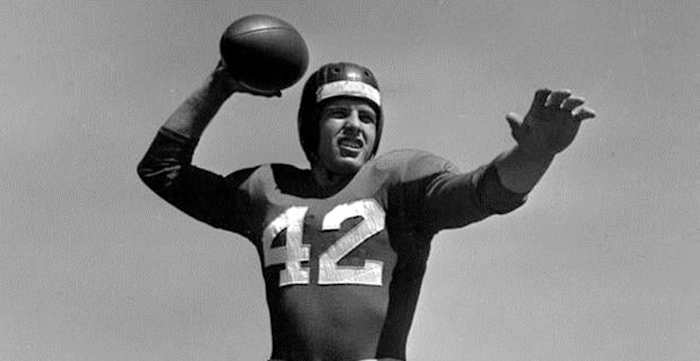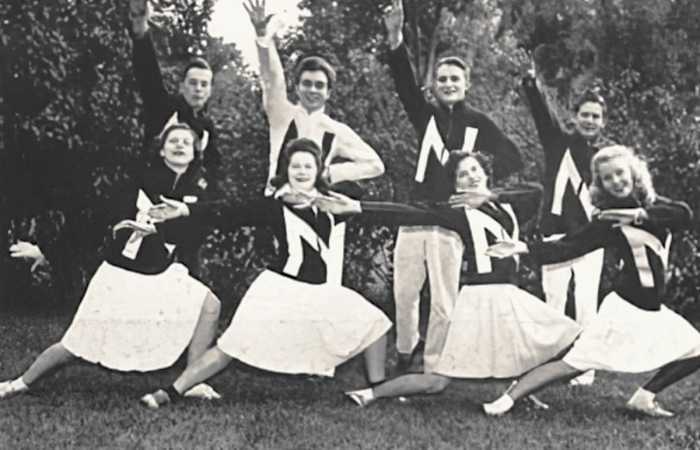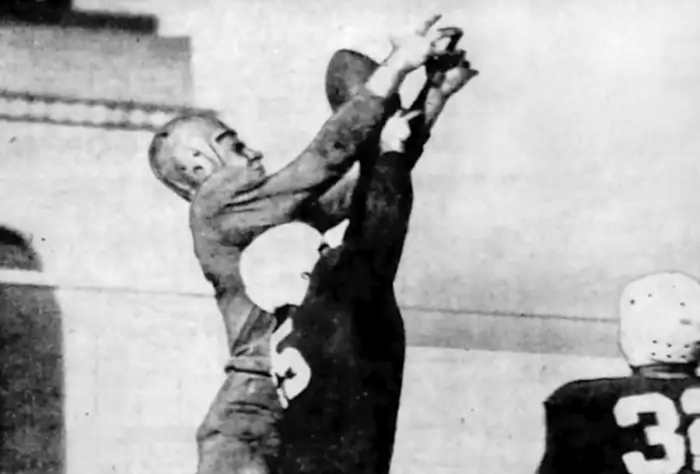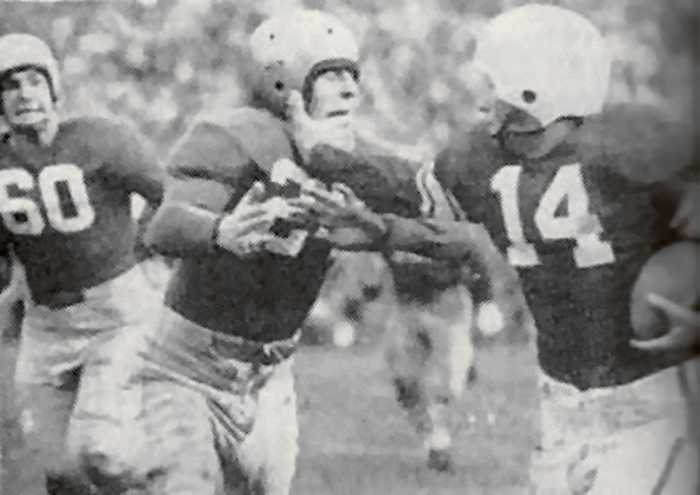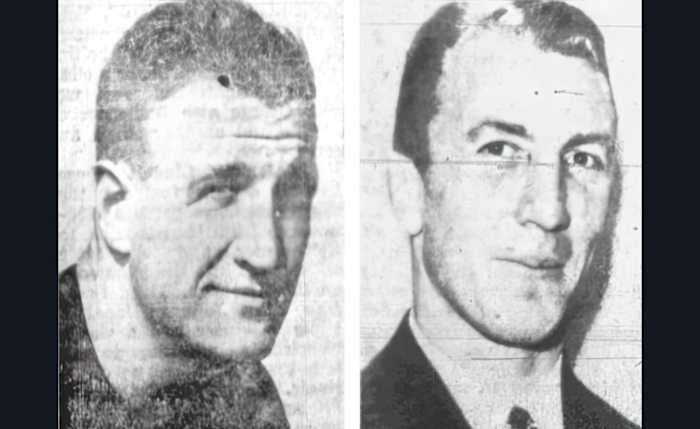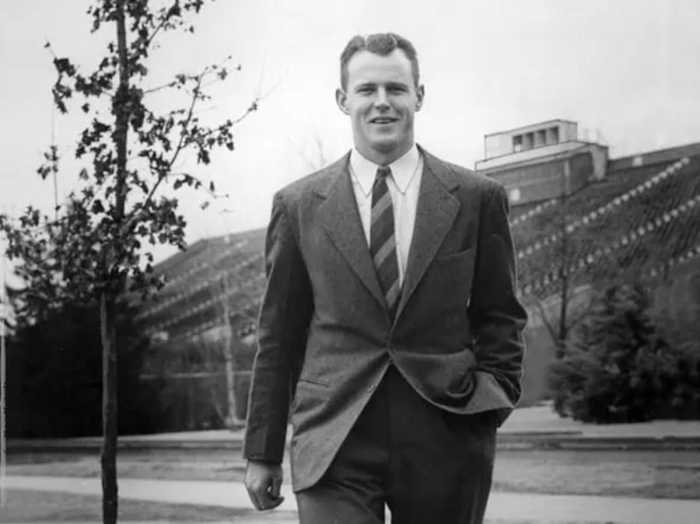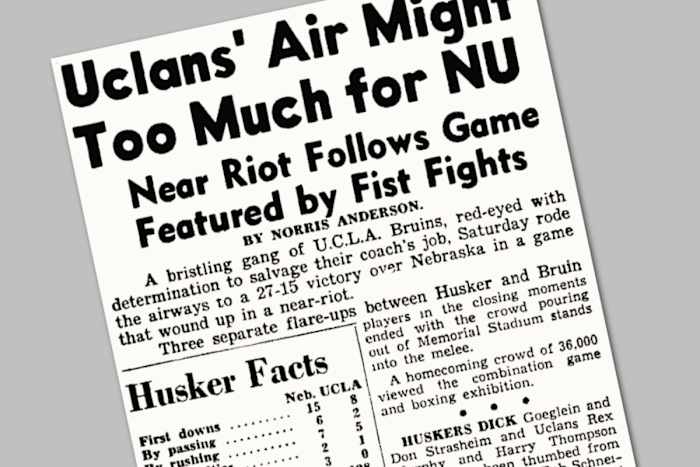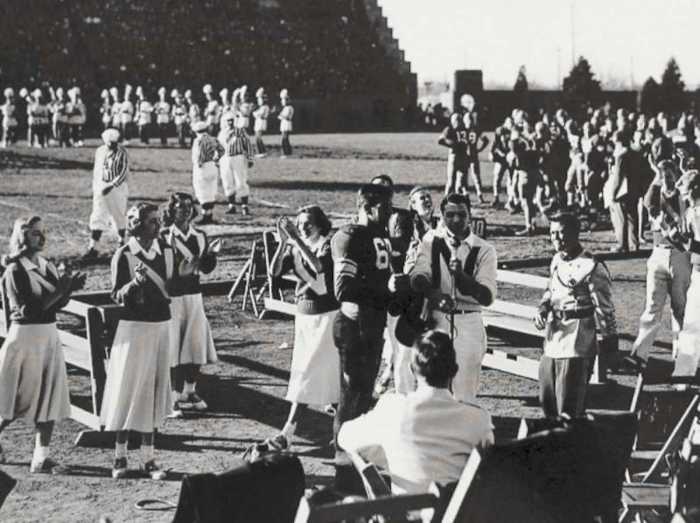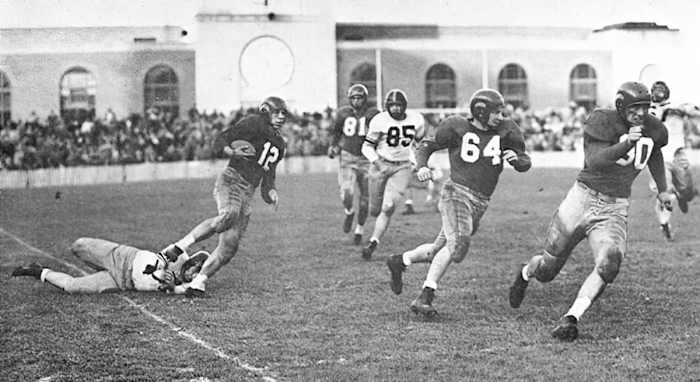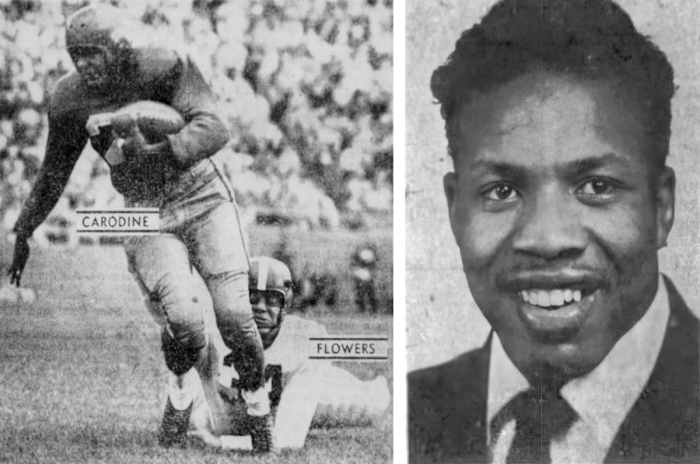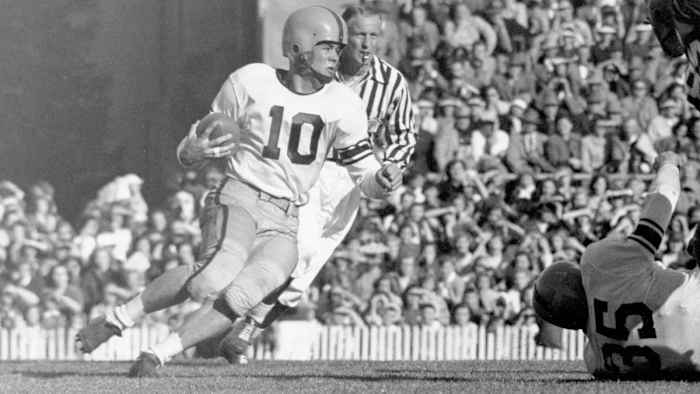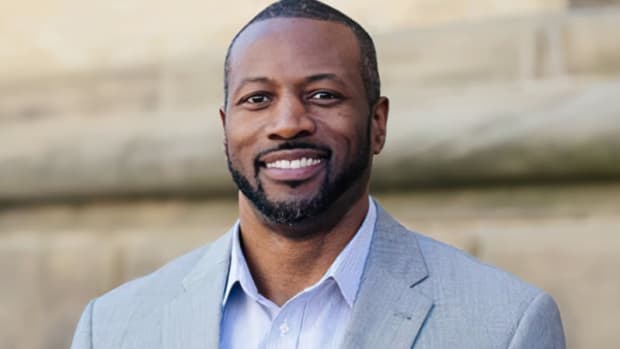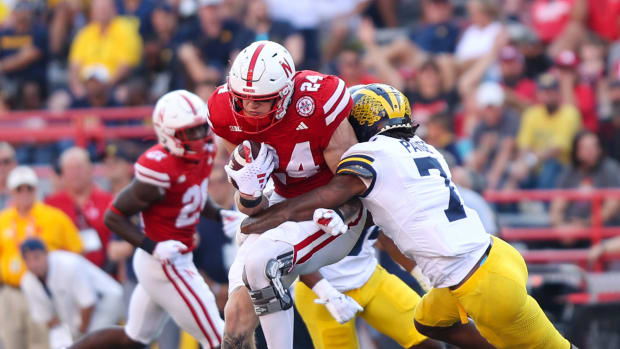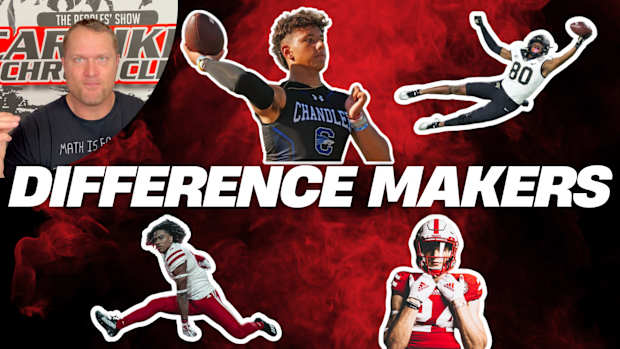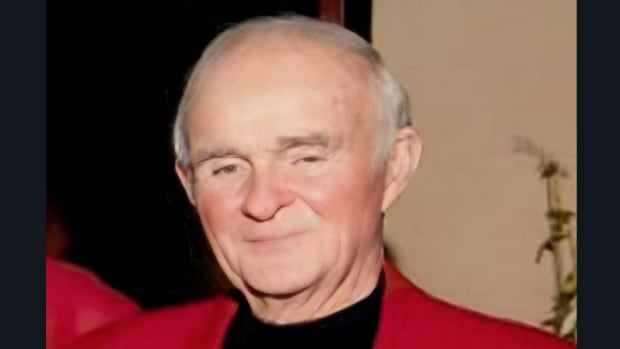Memorial Stadium: The Third Decade, 1943-52

Sixth in a series marking the 100th season of Nebraska football in Memorial Stadium. Pictured above are All-Americans Jerry Minnick, Bobby Reynolds and Tom “Train Wreck” Novak. |
Nebraska’s third decade in Memorial Stadium began with A.J. Lewandowski cobbling together wartime teams consisting largely of 17-year-olds and military rejects. Wins were few and revenues thin. No more than 8,000 fans typically showed up on Saturdays in Lincoln.
“Lew” was a veritable one-man band keeping Nebraska athletics afloat in 1943 and ’44. At one point he wore four hats at once: head football coach, head basketball coach, business manager and acting athletic director.
War’s end did not bring the return of coach Lawrence “Biff” Jones, who declined an offer to become athletic director only. Though revered by many fans, the architect of Nebraska’s Rose Bowl season had made enemies in high places by firing line coach Link Lyman in late 1941.
What peacetime did bring was an influx of players who were grown men — hardened World War II veterans who in many cases had four years of immediate eligibility under the conference’s early postwar rules.
These new Cornhuskers included the likes of the legendary Tom “Train Wreck” Novak and future Pittsburgh Steeler Carl Samuelson. But head coach Bernie Masterson, a former Husker and Chicago Bear, could not parlay that into winning football. One problem was the complexity of the T-formation system he borrowed from the Bears — memorizing up to 300 plays was required. He was ousted after two seasons.
George “Potsy” Clark, whose single-season stints in ’45 and ’48 bookended Masterson’s years, tried to keep opponents on their heels with his multiple formations. One of them was the wide-open “Platte River spread.” Like Masterson, he chalked up more than twice as many losses as wins.
Clark stayed on as athletic director and hired Bill Glassford as head coach, bringing a semblance of stability after six coaching changes in eight years. The former Pitt lineman was just 34 when hired, but he coached with an old-school disciplinary streak. At the same time, he helped modernize the program in terms of recruiting and athletic scholarships. He also coached the first Black varsity players at Nebraska since 1913.
In his second season, Glassford’s 1950 Huskers exploded on offense like a bolt from the blue. Fueled by the brilliance of sophomore halfback Bobby Reynolds, Nebraska suddenly boasted the nation’s No. 2 rushing offense and No. 9 scoring offense. The 6-2-1 season and second-place conference finish, however, proved to be a flash in the pan. The Huskers slid back into middling territory as injuries dogged Reynolds during his junior and senior years.
Scroll past the facts box for a sampling of Memorial Stadium games from this 10-year span.
| Just the Facts: 1943-52 |
|---|
• Home record: 19-26-1 (.424). • Overall record: 32-57-2 (.363). • Conference titles: None. • All-Americans: Tom Novak, 1949; Bobby Reynolds, 1950; Jerry Minnick, 1952. • Head coaches: A.J. Lewandowski, 1943-44; George “Potsy” Clark, 1945, 1948; Bernie Masterson, 1946-47; Bill Glassford, 1949-55. |
Just another mismatch
One shining hour
A Saturday to forget
Up off the mat
Husker vs. Husker
A budding dynasty
A postgame melee
Last stop for “Train Wreck”
Reynolds’ signature play
A barrier comes down
Bad-luck Bobby
Limping to the finish
Postscript: It could’ve been worse
Just one major-college team piled up more losses than Nebraska’s 57 during this stretch, and it was a whole bunch more: 82 times did Kansas State go down to defeat. KSU finished last in the conference all 10 seasons while winning a grand total of two conference games and just nine games overall.
Including KSU’s forfeit of a 6-6 tie game with the Huskers in 1951, Nebraska went 10-0 against Kansas State. That accounted for nearly a third of the Huskers’ wins and more than a quarter of their home victories.
